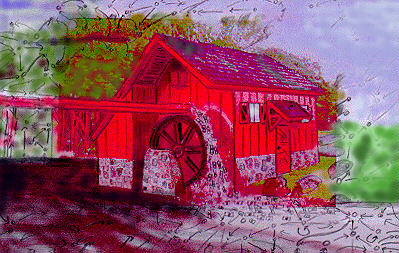“Ladies and gentleman, we will be delayed a bit longer. We expect to have clearance for take-off in about fifteen minutes. We apologize for the delay.”
Agent Carter groaned and slouched deeper into the seat beside me. We were sitting on a 727 bound for St. Louis. The plane was still resting on the runway at O’Hare, in the same spot as it had been for the last twenty minutes. And now it sounded like it would be at least another fifteen minutes more.
Agent Carter loosened his tie and sighed loudly. He was wearing a black suit, white shirt, and a navy tie. He had not taken off his suit-coat when he sat down and he now looked quite uncomfortable.
I was wearing casual pants and a T-shirt. I had been tempted to put on my “munitions” T-shirt that morning, but had decided against it. No point in destroying my good relations with the FBI only days after it began.
My munitions T-shirt is a shirt that I own that has the full implementation of the RSA encryption algorithm printed on it. RSA is not a complex algorithm, and it can be implemented in only a four lines of (highly optimized and very unreadable) Perl. Since the US State Department has declared that any RSA program is to be classified as a munition and therefore can’t be exported, my shirt is a munition. I bought the shirt from a fellow that printed a large number of them and sold them over the Web. The shirt was intended to be a barb directed more toward the State Department and NSA, rather than the FBI. Still, I don’t think that Agent Carter would have found it as amusing as I did.
The plane did eventually take off, about a half hour after the captain had promised us that it would be only fifteen more minutes. The flight was extremely short. It was one of those flights where the plane never really has a chance to level off. No sooner did it fully ascend before it started descending. Agent Carter and I filled that short time with talk of the latest developments in the case. Apparently the FBI had confiscated several of the computers at First Chicago, particularly the desktop machines used in the security department. The hard-drives on those machines contained ample evidence of the delay scam. There were numerous memo’s and e-mail messages that not only detailed specific instances of the scam, but also described the unofficial bank policies outlining circumstances under which the scam should be used and how it should be covered up if questioned.
He said that Lampley had made an effort to delete most of these files, but it is difficult to erase data from a hard-drive such that it can’t be recovered by forensics experts. Jonny spent a good part of the trip bragging about how the FBI was able to recover the data despite Lampley’s efforts to conceal the evidence. I had already heard stories (mainly from the net and other questionable sources) of forensics experts recovering data from disks even after the entire disk had been overwritten with random data. Supposedly, by physically examining the magnetic patterns between tracks on the disk, one can infer what has recently been stored on the tracks. I have also read the FIPS document, where it requires that RAM be zeroized by first powering down the machine, and then powering it back up and overwriting the RAM 1000 times with successive 1’s and 0’s. If proper clearing of RAM requires such elaborate precautions, it comes as no surprise to me that removing all physical evidence of information stored on hard-drives, without actually destroying the drive, is difficult.
When we landed in St. Louis, Jonny took care of the car rental. He got us a grey Taurus, with air-conditioning, thankfully. St. Louis is hot and extremely humid in July.
As it turns out, Bendix of St. Louis is not located in St. Louis. The Bendix headquarters is in Clayton, which is a suburb west of the city. The airport, which is northwest of the city, is directly north of Clayton, and I-170 runs between the two. It was a short drive down I-170 and we reached the bank by 10:30. The building itself was a typical bank headquarters, a glass tower of about thirty floors with a square footprint. Clayton contained many other buildings of a similar nature, at least a couple of which were undoubtedly competing banks. There was parking both under the building and another around in the back. Jonny chose to park in the lot in the back.
Inside, we were met with a strange scene. The bank was a bustle of activity, very little of which appeared to be related to finance. This would not have been a good time to go to Bendix of St. Louis for a loan.
The hallways were filled with people trotting in and out of offices. We passed one room where a women in a beige dress was standing in front of shredder feeding documents in at a steady pace. It looked as if she had been at it for quite some time, judging from the bored expression on her face.
